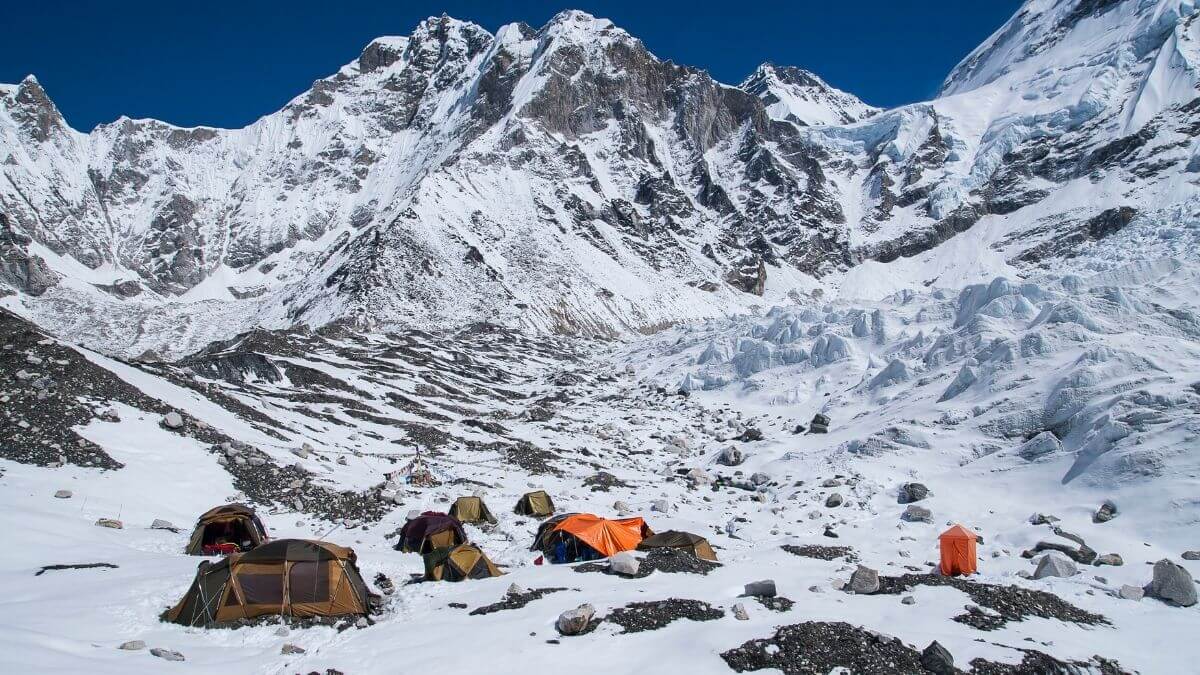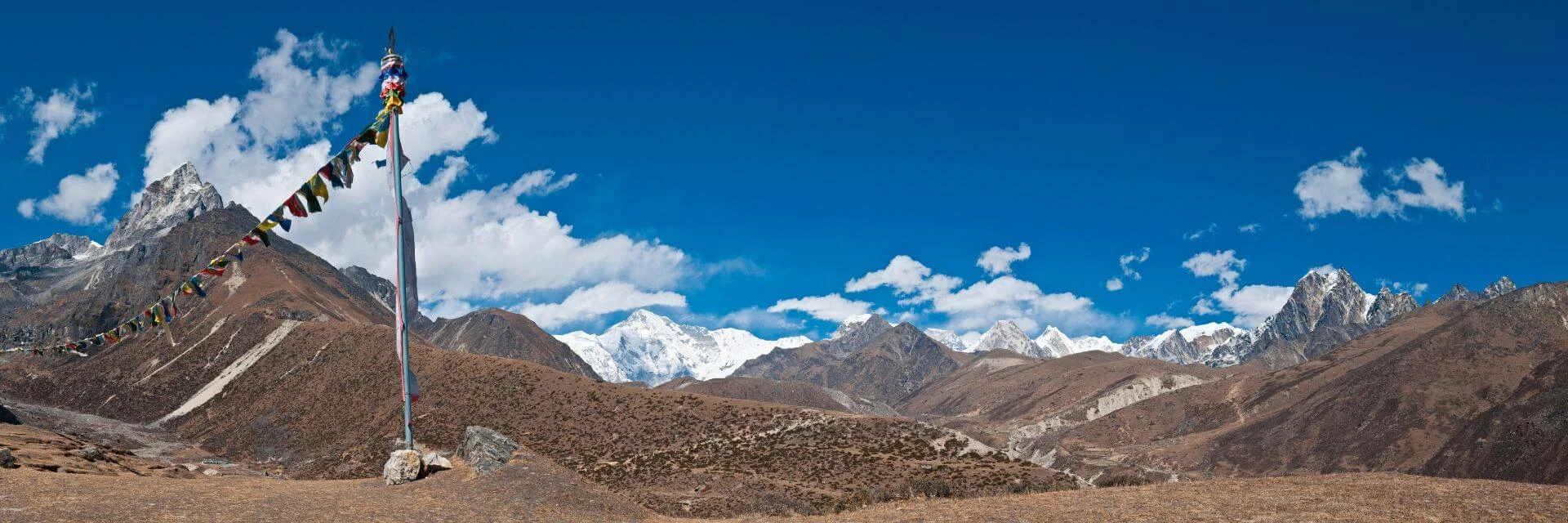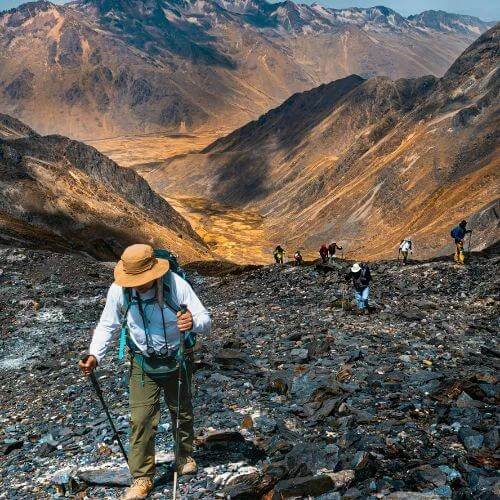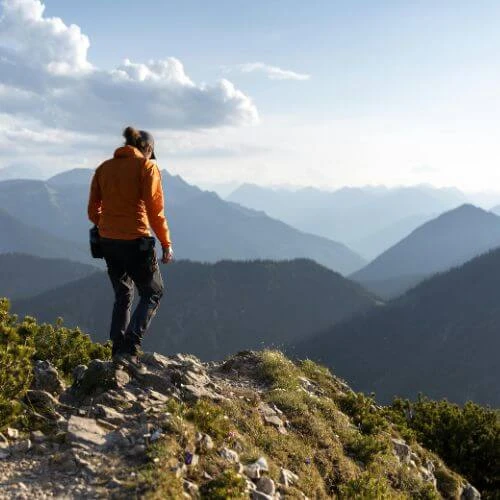If you’ve ever dreamed of standing face-to-face with Mount Everest, the first question that comes to mind is usually, How long is the Everest Base Camp trek? The answer isn’t the same for everyone. It depends on the trail you take, how fast you walk, and how well your body adjusts to the height.
On average, the Everest Base Camp trek takes 12 to 14 days and covers about 130 kilometers round-trip between Lukla and Everest Base Camp. These days include rest and acclimatization stops, which are key for your safety and comfort at high altitude.
Let’s break down everything you need to know - the distance, duration, daily hours, and what factors can make your trek longer or shorter.
Ready to plan your Everest Base Camp adventure? Discover how you can customize your trek to fit your pace, comfort, and schedule with expert guidance from Abound Holidays.
Everest Base Camp Trek Overview
Before diving into numbers, it helps to know what this trek is really like. The Everest Base Camp trek takes you through the Khumbu region of Nepal, starting with a short flight to Lukla and climbing steadily to the base of the world’s highest peak. The trail passes through lush valleys, Sherpa villages, suspension bridges, and Buddhist monasteries - all sitting between 2,800 m and 5,364 m above sea level.
What makes this trek unique is how the journey unfolds slowly, letting your body adjust to the altitude. The total duration can vary based on your fitness, weather conditions, and how many acclimatization days you include.
For most trekkers, 12-14 days is the sweet spot - long enough to reach Base Camp safely while still enjoying every moment on the trail.
Everest Base Camp Trek Distance
Knowing the distance helps you understand how challenging the trek might feel. The Everest Base Camp trek distance is around 130 kilometers (80 miles) for the full round trip from Lukla to Base Camp and back.
Each day, you’ll be trekking around 10 to 15 kilometers, depending on the trail and how high it goes. It might sound easy, but the thin air and steep hills can make even short hikes feel harder. Most days take about 5 to 7 hours, but the higher parts can take longer since you have to move more slowly to get used to the altitude.
Your final trekking time depends on your pace, weather, and overall fitness - but with the right plan, anyone can complete the journey safely.

Typical Everest Base Camp Trek Itinerary
Every trekker follows a slightly different plan, but the standard 12-14-day Everest Base Camp itinerary includes the same major villages and two important acclimatization stops.
This schedule gives you enough time to enjoy the trek, explore local culture, and adapt to the altitude at a safe pace.
14-Day Classic Itinerary Example
To help visualize the journey, here’s a clear look at how far you’ll walk between major stops. This breakdown makes it easier to plan your walking hours, rest times, and overnight stays.
Day | Route & Highlights | Overnight Stop |
Day 1 | Fly Kathmandu → Lukla → trek to Phakding | Phakding |
Day 2 | Trek Phakding → Namche Bazaar | Namche Bazaar |
Day 3 | Acclimatization day at Namche Bazaar; explore nearby trails | Namche Bazaar |
Day 4 | Trek Namche Bazaar → Tengboche (via scenic ridge and monastery views) | Tengboche |
Day 5 | Trek Tengboche → Dingboche | Dingboche |
Day 6 | Rest/acclimatization at Dingboche; optional hike | Dingboche |
Day 7 | Trek Dingboche → Lobuche | Lobuche |
Day 8 | Trek Lobuche → Gorak Shep → walk to Everest Base Camp | Gorak Shep |
Day 9 | Early hike to Kala Patthar for sunrise views → descend to Pheriche | Pheriche |
Day 10 | Trek Pheriche → Namche Bazaar | Namche Bazaar |
Day 11 | Trek Namche Bazaar → Lukla | Lukla |
Day 12 | Buffer/rest day in Lukla or contingency for weather, enjoying the village & surroundings | Lukla |
Day 13 | Fly Lukla → Kathmandu | Kathmandu |
Day 14 | Departure: Leisure in Kathmandu and flight home | - |
Shorter & Longer Variations
Not everyone finishes the trek in the same number of days. Some people go faster or slower depending on how fit they are, how comfortable they feel, and what they want to achieve.
- 12-Day Express Trek: The 12 days Everest Base Camp trekis best for experienced hikers with prior altitude experience. It skips one or both acclimatization days.
- 16-Day Chill Trek: The 16-day trip adds extra rest days or side trips like Gokyo Lakes or Everest View Point. It is perfect for first-timers who want more time to enjoy the views and local culture.
Factors That Affect Trek Duration
No two treks are the same, even on the same route. The time it takes to finish the Everest Base Camp trek depends on several factors, like your fitness, altitude adjustment, and weather.
Knowing these helps you plan a realistic itinerary and avoid rushing through the experience.
Acclimatization and Altitude Adjustment
The higher you climb, the less oxygen your body gets. This is why acclimatization days - usually in Namche Bazaar and Dingboche - are built into every standard itinerary.
They let your body adapt and prevent Acute Mountain Sickness (AMS), which can affect your trek speed and safety.
Fitness Level and Experience
Your physical fitness shapes how you feel each day on the trail. Even though the trek doesn’t require technical climbing, it involves continuous uphill and downhill walking. If you have basic endurance and train beforehand, you’ll handle the 12-14 days comfortably. Beginners can also complete it with a slow and steady pace.
Route Choice and Side Trips
Most trekkers follow the Lukla-Namche-EBC route. But if you add side trails like the Gokyo Lakes, Chukhung Ri, or Three Passes, your trek might extend to 16-20 days. These detours add scenic beauty but also increase total walking distance and time.
Weather and Trekking Season
Seasonal weather in the Himalayas can change everything. In winter or monsoon, you might face flight delays or snow-covered trails. Meanwhile, spring and autumn (Everest September trekking) offer clear skies and stable conditions, helping you stay close to your planned schedule.

Daily Trekking Hours on the Everest Base Camp Route
Understanding daily walking hours helps you plan rest, meals, and energy levels better. On most days, trekkers walk 5 to 7 hours, covering moderate distances with breaks for tea and lunch. The lower part of the route, like Lukla to Phakding, is easier, while higher sections, such as Lobuche to Gorak Shep, are slower due to altitude.
Tips to Manage Your Pace
- Start walking early in the morning when the weather is steady
- Take short, regular breaks instead of long ones
- Keep a steady pace and don’t rush ahead
- Drink enough water to stay full of energy
Need help pacing yourself for the trek? Learn tips from experienced guides to manage your energy and enjoy every step safely with Abound Holidays.
Everest Base Camp Trek Distance by Section
To help visualize the journey, here’s a clear look at how far you’ll walk between major stops. This breakdown makes it easier to plan your walking hours, rest times, and overnight stays.
Route Section | Distance | Hours (avg) |
Lukla → Phakding | 8 km | 3-4 hrs |
Phakding → Namche Bazaar | 10-11 km | 5-6 hrs |
Namche Bazaar → Tengboche | 10 km | 5-6 hrs |
Tengboche → Dingboche | 11 km | 5-6 hrs |
Dingboche → Lobuche | 8 km | 5-6 hrs |
Lobuche → Gorak Shep → EBC | 12 km | 7-8 hrs |
EBC → Lukla (return) | 65 km total | 3-4 days |
Helicopter Return Option: Cut Trek Time in Half
If you’re short on time but still want to experience the full trek, a helicopter return is the fastest way down. Instead of walking back for three or four days, you can take a helicopter from Everest Base Camp, Gorak Shep, or Lukla directly to Kathmandu.
It’s ideal for trekkers with tight schedules or those who want a comfortable ending after reaching Base Camp. You’ll also get stunning aerial views of the Khumbu Glacier, Mount Everest, and the Himalayas.
Average cost: USD 400-600 per person, depending on weather and seat availability.
Best Season for Everest Base Camp Trek Duration
Choosing the right season can make a big difference in how smooth your trek goes. Each season brings its own trail conditions, weather, and visibility, all of which affect how long it takes to complete the trek.
Season | Months | Trail Conditions | Duration Impact |
Spring | Mar - May | Clear skies, mild weather, blooming trails | Ideal 12-14 days |
Summer/Monsoon | Jun - Aug | Rainy, cloudy, slippery paths | May take longer |
Autumn | Sep - Nov | Stable weather, great visibility | Ideal 12-14 days |
Winter | Dec - Feb | Cold, some snow, fewer crowds | Maybe slower |
Not sure when to trek to Everest Base Camp? Explore the best time for the Everest Base Camp Trek with our expert advice to make the most of your journey.
Tips to Complete the Trek on Time
Reaching Everest Base Camp on schedule requires more than just walking every day. Proper planning, steady pacing, and smart decisions along the trail can make a big difference.
- Start each day early to avoid afternoon clouds or wind
- Take proper acclimatization days and avoid rushing uphill
- Drink plenty of water and eat energy-rich meals
- Keep your backpack light, but include essentials like layers and snacks
- Always follow your guide’s instructions for pace and rest
Book with Abound Holidays
Planning an Everest Base Camp trek can feel overwhelming at first. At Abound Holidays, our local team creates flexible plans that fit your schedule and fitness level. We handle everything from your Lukla flights, trekking permits, lodges, and guides. All so that you can focus on enjoying the trek, not the planning.
Plan your Everest Base Camp trek with Abound Holidays and enjoy a balanced, safe, and unforgettable Himalayan experience. Contact us today for further inquiry.
FAQs: How Long is Everest Base Camp Trek
How many days does it take to reach Everest Base Camp?
Reaching Everest Base Camp from Lukla typically takes 8 days, including two acclimatization days at Namche Bazaar and Dingboche.
What is the total distance of the Everest Base Camp trek?
The full round trip from Lukla to Everest Base Camp and back covers roughly 130 km (80 miles). Daily trekking distances range from 8 km to 18 km, depending on terrain and elevation gain.
Can beginners complete the trek in 12 days?
Yes, beginners can complete the trek in 12-14 days if they maintain a steady pace and follow the acclimatization schedule. Skipping rest days can shorten the trek but increases the risk of altitude sickness.
How much time should I spend acclimatizing on the trail?
At least two full days should be allocated for acclimatization: usually one day in Namche Bazaar and another in Dingboche. These stops help your body adjust to higher altitudes and reduce the risk of Acute Mountain Sickness (AMS).
Is there a shorter Everest Base Camp trek option?
Yes. Fit trekkers can do a 10-day express trek, which reduces rest days, or choose a helicopter return, which cuts 3-4 days off the itinerary while still allowing you to experience the full trek up to Base Camp.
How long does it take to return from Everest Base Camp to Lukla?
The return trek from Everest Base Camp to Lukla usually takes 3-4 days, depending on your pace and weather conditions. Many trekkers descend faster than they ascend, but you should still maintain a steady pace to avoid strain.
Does the weather affect the trek duration?
Yes. Heavy snow, rain, or strong winds can delay flights or slow walking days. Monsoon (June-August) and winter (December-February) seasons are more likely to cause delays, while spring (March-May) and autumn (September-November) generally offer stable conditions.
Can I take a helicopter from Base Camp to Kathmandu to save time?
Yes. You can take a helicopter from Gorak Shep or Base Camp back to Kathmandu, which saves 3 to 4 days of walking. This is perfect for trekkers who don’t have much time or want to get down faster after reaching Base Camp.


 based on 15 reviews
based on 15 reviews


